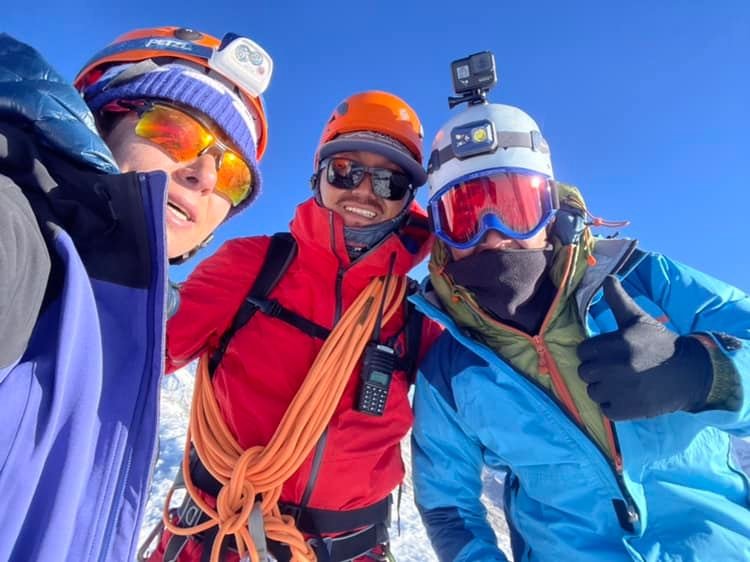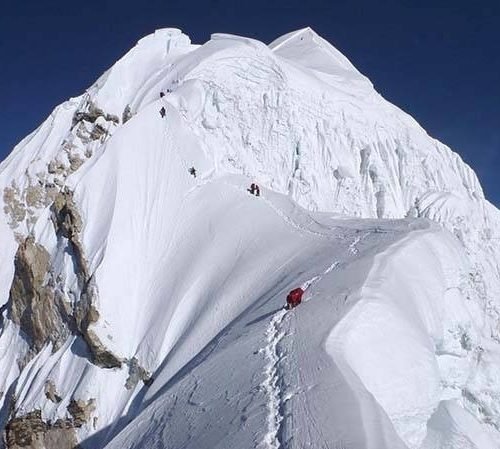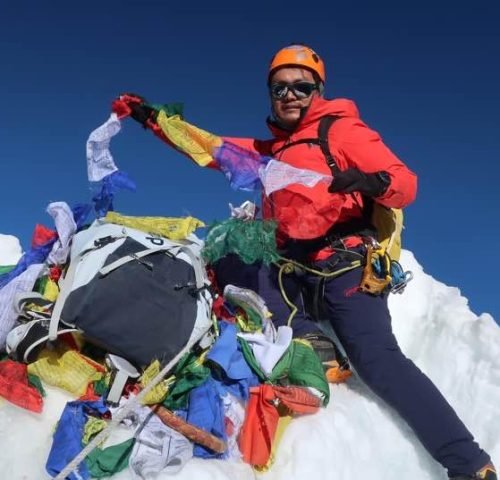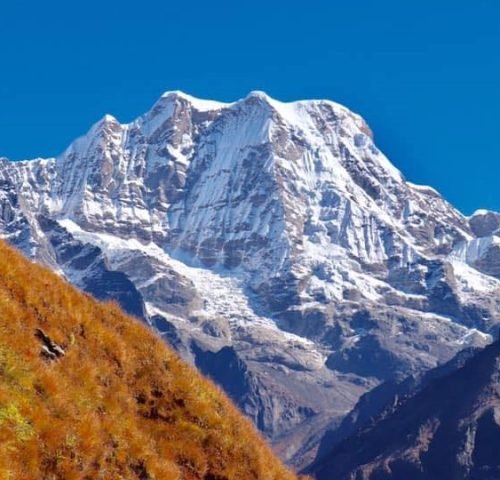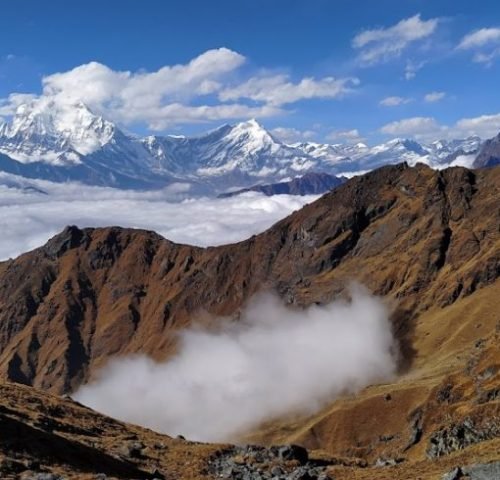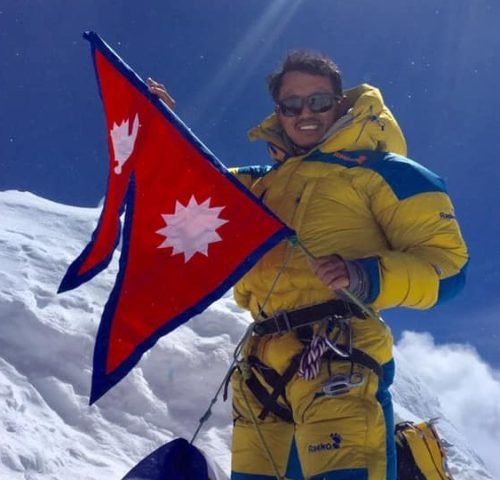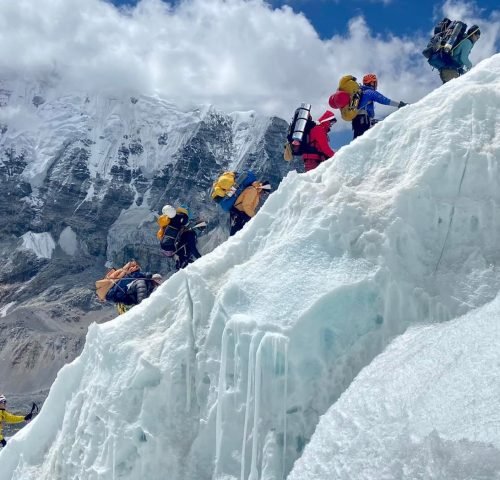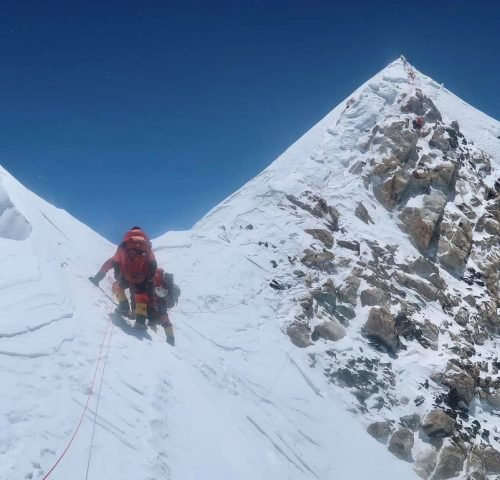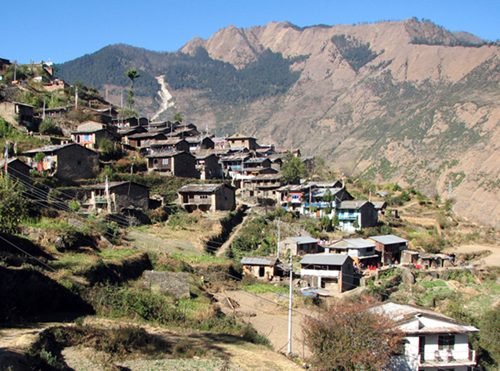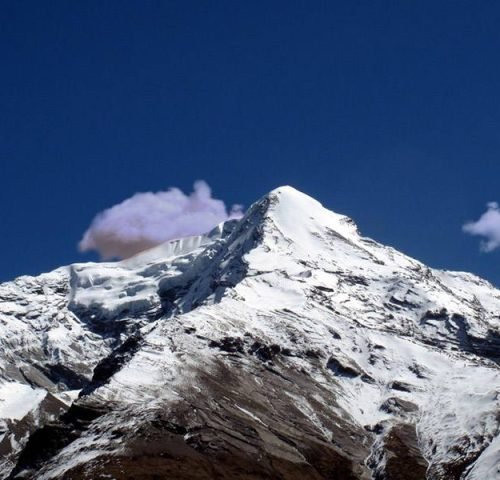Overview
Pisang peak 6091m Situated in the Manang district of Nepal, Pisang Peak holds immense historical and cultural significance. The region has been a hub for trade and pilgrimage for centuries, serving as a crucial link between Tibet and Nepal. The Buddhist influence is evident in the numerous monasteries and prayer flags that dot the landscape, adding a spiritual dimension to the trekking experience. Exploring the region provides a unique opportunity to immerse oneself in the rich local culture, interact with friendly villagers, and witness their traditional way of life.
Trekking to Pisang Peak Manang is not for the faint-hearted. The journey demands physical endurance, mental fortitude, and meticulous planning. The altitude, rugged terrain, and unpredictable weather conditions pose challenges that require trekkers to be adequately prepared. Acclimatization is crucial, as the high altitude can lead to altitude sickness. Proper physical training, including cardiovascular exercises and strength training, helps build stamina and prepares trekkers for the arduous uphill climbs. Additionally, packing essential gear, such as sturdy hiking boots, warm clothing, and a reliable climbing harness, is necessary for a safe and successful expedition.
Despite the challenges, the rewards of conquering Pisang Peak are unparalleled. Standing at an impressive elevation of 6,091 meters (19,980 feet), the summit offers breathtaking panoramic views of the surrounding Annapurna range. The feeling of accomplishment and the sense of awe that comes with reaching such heights cannot be overstated. The ethereal beauty of the snow-capped peaks, the vast glaciers, and the pristine alpine lakes create a profound connection with nature that leaves a lasting impression on trekkers. Moreover, the journey itself fosters personal growth, resilience, and a deep appreciation for the natural world.
As the of popularity trekking in the Annapurna region continues to grow, it is crucial to emphasize sustainable tourism practices to preserve the fragile ecosystem and protect the local culture. Conservation efforts, such as waste management systems, responsible camping practices, and community-based tourism initiatives, play a vital role in maintaining the ecological balance of the region. Local communities and trekking agencies should work together to promote responsible tourism, ensuring that future generations can continue to enjoy the wonders of Pisang Peak Manang.
Details Itinerary
Day 1: Arrival in Kathmandu
Arrive at Tribhuvan International Airport in Kathmandu, transfer to your hotel and explore the vibrant streets of Thamel in the evening.
Day 2: Kathmandu Sightseeing
Enjoy a guided tour of Kathmandu's cultural and historical landmarks, visit UNESCO World Heritage such as Kath sitesmandu Durbar Square, Swayambhunath Stupa, and Boudhanath Stupa and Prepare for the climbing expedition, including necessary permits and equipment checks.
Day 3: Drive to Besisahar and Trek to Bhulbhule
Take a scenic drive from Kathmandu to Besisahar (6-7 hours) Begin your trek to Bhulbhule, a small village in the Annapurna region. Overnight stay in Bhulbhule
Day 4: Trek to Jagat
We Continue trek through beautiful landscapes and local villages and reach the village of Jagat after approximately 6-7 hours of trekking. Overnight stay in Jagat
Day 5: Trek to Dharapani
Trek from Jagat to Dharapani, passing through lush forests and terraced fields, Explore the traditional village of Dharapani and experience the local culture. Overnight stay in Dharapani
Day 6: Trek to Chame
Trek from Dharapani to Chame, the headquarters of the Manang District, enjoy breath taking views of the Annapurna, Lamjung and Manaslu Himalayan ranges. Overnight stay in Chame
Day 7: Trek to Upper Pisang
We Continue trek to Upper Pisang, a beautiful village with stunning mountain views of Annapurna II, III and IV. Explore the monastery and experience the local Tibetan culture in Pisang village. Overnight stay in Upper Pisang
Day 8: Acclimatization Day in Upper Pisang
We Take a day to acclimatize and rest in Upper Pisang or we have optional hike to explore the surrounding areas and enjoy panoramic views. Overnight stay in Upper Pisang
Day 9: Trek to Pisang Peak Base Camp
Begin your climb towards the Pisang Peak Base Camp, we reach basecamp after approx. 5-6 hours climbing, set up camp and prepare for the summit push. Overnight stay at the Base Camp in tent
Day 10: Summit Pisang Peak and Return to Upper Pisang
We start early in the morning to attempt Pisang Peak (6,091 meters), Enjoy the breath-taking views from the summit take some photos and videos then descend back to the Base Camp and then continue to Upper Pisang. Overnight stay in Upper Pisang
Day 11: Drive to Besisahar by jeep and Drive to Kathmandu
Drive back to Besisahar and then take a scenic drive back to Kathmandu, transfer to your hotel in Kathmandu, Spend the evening exploring the city or relaxing.
Day 12: Departure
Depart from Kathmandu with wonderful memories of your Pisang Peak climbing adventure.
Cost Details
WHAT'S INCLUDED
• 3 Nights Hotele accommodations in Kathmandu at 3 star Hotel on Bed & Breakfast plan (before & after expedition).
• Airport pick up and drop up by private vehicle
• Transportation Kathmandu to Besisahar, Pisang to Kathmandu
• Guide and Porter
• Climbing Permit fee.
• Annapurna conservation Entry Permit, Local Grassland Permit Fees
• Full board in lodges during trekking and 2 nights in camping.
• Fresh Food (we serve hygienic foods) and fuel at Base Camp.
• Base Camp single sleeping tent & Mattress for each member.
• High Tents above Base Camp.
• There will be one personal professional climbing guide while climbing. one Sherpa climber for one person
• Service of cook and kitchen boy at Base Camp.
• Insurance, Equipment allowance, daily wages of cook, kitchen boys.
• 1 Expedition duffel bag for each member.
• Agency service charge and Tax.
WHAT'S NOT INCLUDED
• International airfare from/to your country.
• Nepal entry visa fee (can be obtained at the airport at upon arrival).
• Lunch and dinner during your stay in Kathmandu.
• Hotel accommodation after 3 night's stay in Kathmandu.
• Personal climbing gear and equipment above Base Camp.
• Personal insurance such as travel, accident, medical, emergency evacuation & lost luggage.
• Permit fees & customs charges, etc. for SAT phone, communication equipment & commercial filming.
• Expenses of personal nature such as drinks, laundry, postage, telephone etc.
• Tips
Map
FAQs
1. How high is pisang peak ?
The pisang peak is located in the Annapurna region of Nepal and stands at an elevation of 6091 meters above sea level. it is popular trekking peak and offer stunning view of the surrounding Himalayan mountains.
2. How fit do I need to climb pisang peak ?
To climb Pisang Peak, it is important to have a good level of fitness and endurance. It is classified as a technical peak, so prior mountaineering experience and knowledge of using climbing equipment is essential. Additionally, you should be comfortable with long hours of trekking and be able to handle high altitude conditions.
It is recommended to engage in regular physical training before attempting the climb. This can include cardiovascular exercises like hiking, running, or cycling to improve your stamina. Strength training exercises focusing on your core, legs, and upper body will also be beneficial for the physical demands of climbing.
3. Which is the best season to climb Pisang peak ?
The best season to climb Pisang Peak is generally during the spring (April and May) and autumn (October and November). During these seasons, the weather is generally stable, with clear skies and minimal rainfall. The temperatures are moderate, making it more comfortable for climbing.
In spring, you can expect beautiful blooming rhododendron forests and lush green landscapes, while autumn offers clear views of the surrounding mountains and colorful autumn foliage.
It's important to note that weather conditions can vary, and it's always a good idea to check with authorities local or experienced mountaineering guides for the most up-to-date information before planning your climb. They will have the best knowledge of the current conditions and can provide guidance on the best time to attempt the climb.
Manual Notes:
Lorem Ipsum is simply dummy text of the printing and typesetting industry. Lorem Ipsum has been the industry's standard dummy text ever since the 1500s, when an unknown printer took a galley of type and scrambled it to make a type specimen book. It has survived not only five centuries, but also the leap into electronic typesetting, remaining essentially unchanged. It was popularised in the 1960s with the release of Letraset sheets containing Lorem Ipsum passages, and more recently with desktop publishing software like Aldus PageMaker including versions of Lorem Ipsum.
